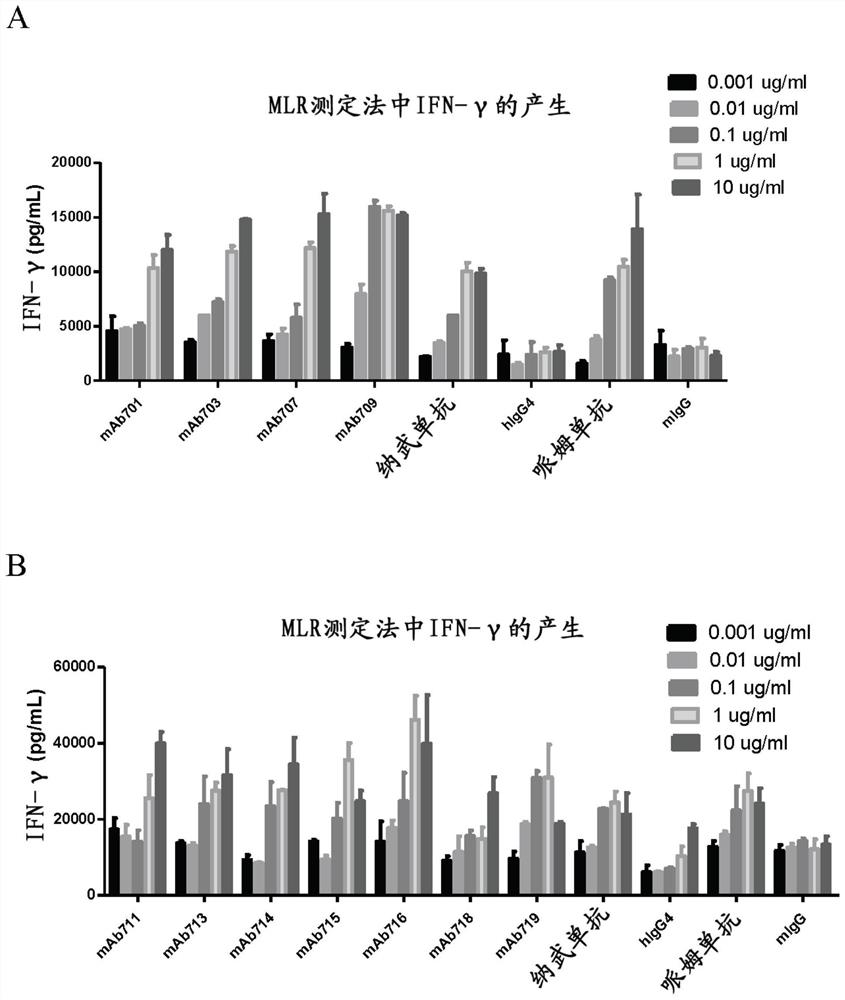High affinity antibodies to pd-1 and lag-3 and bispecific binding proteins made therefrom
A LAG-3, PD-1 technology, applied in the direction of anti-receptor/cell surface antigen/cell surface determinant immunoglobulin, anti-animal/human immunoglobulin, antibody, etc., can solve the limitation of CD8+ T cells Anti-tumor response and other issues to achieve the effect of reducing tumor-infiltrating Treg cell population and overcoming anti-tumor immunosuppression
- Summary
- Abstract
- Description
- Claims
- Application Information
AI Technical Summary
Problems solved by technology
Method used
Image
Examples
Embodiment 1
[0164] Example 1: Production of anti-human PD-1 monoclonal antibody
[0165] Anti-human PD-1 monoclonal antibodies were generated as follows:
Embodiment 11
[0166] Example 1.1: Immunization with human PD-1 antigen
[0167] On day 1, 50 μg of recombinant purified human PD-1 extracellular domain (ECD) polypeptide mixed with complete Freund's adjuvant was injected intraperitoneally into five 6-8 week old Balb / C and five SJL mice middle. On days 16 and 26, 25 μg of recombinant purified human PD-1 ECD immunogen mixed with incomplete Freund's adjuvant was injected intraperitoneally into the same mice. 3-4 days before fusion, a final booster immunization was performed with 25 μg of immunogen.
Embodiment 12
[0168] Example 1.2: Generation of hybridomas
[0169] According to the determination method described in Kohler and Milstein, Nature, 256:495-497 (1975), the splenocytes obtained from the immunized mice described in Example 1.1 were mixed with SP2 / 0-Ag-14 cells at a ratio of 5:1 The proportion of fusion, resulting in hybridoma. Fusion products were mixed at 1×10 per well 5 Splenocytes were plated at a density of 96-well plates in selective medium containing hypoxanthine-aminopterin-thymidine (HAT). Seven to ten days after fusion, macroscopic hybridoma colonies were observed.
PUM
 Login to View More
Login to View More Abstract
Description
Claims
Application Information
 Login to View More
Login to View More - R&D
- Intellectual Property
- Life Sciences
- Materials
- Tech Scout
- Unparalleled Data Quality
- Higher Quality Content
- 60% Fewer Hallucinations
Browse by: Latest US Patents, China's latest patents, Technical Efficacy Thesaurus, Application Domain, Technology Topic, Popular Technical Reports.
© 2025 PatSnap. All rights reserved.Legal|Privacy policy|Modern Slavery Act Transparency Statement|Sitemap|About US| Contact US: help@patsnap.com



